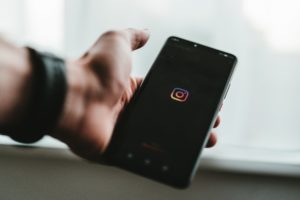The Social Media Blackout
Published on October 26, 2021, at 5:32 p.m.
by Elise Luoma.
Social media giants Instagram, Facebook and WhatsApp suddenly went “dark” during an outage on Oct. 4, 2021. The six-hour “blackout” compromised business operations and hindered companies’ ability to use these social media platforms as their prime communication tools.
Reliance on social media communications
The outage affected people of all fields and career paths — especially public relations professionals. Such an interruption shows how reliant businesses (and people) are on social media. The Facebook conglomerate went dark due to “configuration changes on backbone routers” and led professionals to use other platforms such as Twitter, LinkedIn and TikTok to disseminate information.

“[The outage] opened my eyes on a personal front and on a client service front too,” said Maret Montanari, communications and public relations specialist at Jackson Spalding. “It shows how reliant our society has become on just a few apps, and we really don’t have control over many things on those apps. We’re at the mercy of the apps’ policies and technology, if it is up and running, and the direction and strategy they use.”
Montanari highlighted how the outage affected both her professional and personal life. On a personal note, she created and currently manages “The Sishood of the Traveling Fork,” a food and lifestyle blog, which she promotes on Instagram. “The outage just served as a good reminder that you should never put all of your eggs in one basket with social media or external communications,” she said. When she realized Instagram was down, she had “no one to share her food with.”
Brands made light of the situation by making their own jokes about the outage on social media. Twitter’s tweet of “hello, literally everyone” received over 3.3 million likes and several replies from companies such as Lowe’s and Snickers. Slim Jim tweeted, “Well that’s something IG and FB can’t say [right now],” while Oscar Mayer posted, “You were made for this moment” in response to the tweet. These reactions show how creativity and adaptability are two key elements for brands to retain support and loyalty with their consumers.
Kathleen McManus, junior account executive at Lippe Taylor, highlighted the importance of adaptability. She said “staying informed of outages and diversifying platforms are essential to ensure brands and bloggers can successfully reach their audiences,” which is exemplified by the aforementioned brands’ humorous responses to keep customers engaged.
A brand’s communication goals determine which social media channels to use — based on each platform’s unique advantages. McManus elaborated, “For LinkedIn, it may be to connect with a certain professional audience. For Twitter, it may be to engage in conversations that are already occurring. For Instagram, it may be to share visual content that relates to the brand. Each platform serves a specific purpose and ladders up to an overarching strategy.”
Anna Claire Toxey, coordinator of college relations at The University of Alabama’s College of Communication and Information Sciences, noted Instagram is one of the most prominent apps for higher education. “Posting Instagram stories is how we produce ‘casual content’ to get some of our quick, informal messages out, so it is really hard to get messages out to students and alumni [during an outage] because they are so used to going solely to that platform,” she said.

Crisis communication strategies
There are no written rules for having a universal plan for times of crisis, as each company has its own needs and objectives. Many companies craft “employee-wide” plans to mitigate technical issues and provide social media troubleshooting guides. According to Hootsuite, a social media management platform, it takes companies an average of 21 hours to defend themselves during a crisis in any kind of meaningful way.
McManus described strategies she implements to mitigate unexpected technical issues. “Typically, outages don’t last more than a few hours, so it can be easy to mitigate by pushing scheduled content back a few hours, or if the content is not incredibly timely, even to the next day,” said McManus. “I refresh the platforms periodically to check for changes and monitor other platforms such as Twitter for a conversation about an Instagram outage.”
Facebook’s statement of “we’re sorry” and “there was no evidence that any user data was compromised during the disruption” in response to the outage received criticism.
“It’s always important to address [the problem], and they were right to put out communication,” Montanari advised. “[However,] it wasn’t the best statement and may have rubbed people a little wrongly because it sounds like a blanket statement and doesn’t communicate the frustration customers were experiencing.”
Toxey highlighted the vitality of brands “rebuilding trust” and “having some type of commitment or promise” for consumers in the future.

Instagram’s new outage-testing feature
The six-hour-long outage caused Instagram to take action and seek preventive measures. Its newly implemented “experimental” feature will notify users directly in their Activity Feed before there is an outage or technical issue by sending updates to users in real-time on the “Account Status” tab of their accounts.
The next few months will determine Instagram’s success with this feature and whether it will transition the pilot program into a permanent one. “That lack of clarity [knowing exactly what the issue is] can be frustrating, which is why we want it to be easier to understand what’s going on, directly from us,” said Instagram in a blog post. Its history of having consistent technical issues has caused users to become frustrated, impatient and inclined to use other platforms. Through these preventive measures, Instagram is attempting to make its relationship with consumers more cohesive, improve the user experience and enhance its trustworthiness.
The road to navigating technical issues is prevalent in the “digital age” and will be a challenge for many. Companies have become adaptable and creative in preparation for future outages — paving the way for effective social media and communication strategies.




